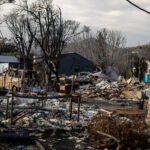The start of summer means summertime jobs for many teens across the U.S. In 2015, 19.1 million workers under 24 years old represented 13 percent of the workforce, according to the National Institute for Occupational Safety and Health (NIOSH).
The Occupational Safety and Health Administration (OSHA) reports that younger workers are exposed to several kinds of hazards, including unsafe equipment and inadequate safety training and supervision.
In 2015, NIOSH reported 403 workers under 24 years of age died from work-related injuries, including 24 fatalities of workers under the age of 18. During the 10-year period of 1998-2007, there was an average of 795,000 nonfatal injuries to young workers treated in U.S. hospital injury departments annually. The rate for emergency department-treated occupational injuries of young workers was estimated to be two times higher than among workers 25 years and older, the agency reported.
According to a Washington State Department of Labor & Industries (L&I) report, cuts, sprains and strains were the most common teen work injuries reported by the state. The new data revealed a steady increase in teen workplace injuries in recent years. A total of 675 teens, age 17 and under, reported injuries on the job in Washington in 2016.
“It’s been long known that young workers have a higher rate of getting hurt on the job than older adults, said L&I Child Labor Specialist Josie Bryan. “Even one injury is too many.”
On its website, OSHA outlines some of the hazards young workers face in specific jobs:
Retail and Grocery Stores:
- Heavy lifting
- Slippery floors
- Equipment and machinery
Food Service:
- Hot cooking equipment
- Slippery floors
- Violent crime
Janitorial:
- Hazardous chemical exposure
- Heavy lifting
- Biocontamination on discarded items
Office Work:
- Ergonomic issues
- Repetitive hand motion
Outdoor Work:
- Heat exposure
- Pesticide exposure
- Machinery
Agriculture:
- Hazardous chemicals
- Grain bin hazards
- Machinery Injuries
According to NIOSH stats, the leisure and hospitality industry – which includes food service – was the biggest employer of teens ages 15-17 (44%), followed by retailers. Though not the biggest employer of teens, the agriculture industry exposes more than 2 million workers under the age of 20 to farm-related safety hazards every year, according to OSHA.
Among the most frequent injuries Washington teens suffered at work in 2016 were 160 cases of cuts and lacerations, 91 sprains and strains, and more than 90 falls. Not surprising, accommodations, food service and retail were the employers with the most teen workplace injuries.
Massachusetts compiled a report on teen injuries in 2014. The state examined teen workplace injuries sustained between 2007-2011. Some of the findings:
- Male teens not only accounted for more injuries than females, they also had higher rates of injury.
- The majority of injuries were to 17-year-olds followed by 16-year-olds.
- Sprain injuries and open wounds each accounted for nearly a third of lost wage claims filed (32% and 31% respectively).
- Accommodation & food service, including restaurants, accounted for the most work-related injuries to teens (33%); retail trade trailed close behind (26%).
The state reported two teen workplace fatalities during the same period.
Mitigating Teen Workplace Injuries
Bryan says training and supervision are key to decreasing teen work injuries.
“We all want teens to get their first job, we just want to make sure they’re safe when they’re doing it,” Bryan said. “Even the simplest things, such as how to mop up a spill or properly dispose of trash, can make a difference.”
In Washington, all workers have a right to appropriate training and can refuse unsafe work assignments, Bryan said. In general: 14- and 15-year-olds may perform lighter tasks, such as office work, cashiering and stocking shelves; while 16- and 17-year-olds can do more, including some limited work in landscaping or manufacturing.
Some of the state’s prohibited duties for teens under the age of 18 include not working on anything higher than 10 feet off the ground, not working alone at night, and not around heavy machinery. Teens 16 years old can’t drive on the job, and 17-year-olds can drive only under limited circumstances. Limits on work hours also vary by age.
Parents are encouraged to ask questions about potential jobs, including what the hours worked will be and what type of training the employer offers.
Was this article valuable?
Here are more articles you may enjoy.

 Insurance AI Demo Day Calendar Announced
Insurance AI Demo Day Calendar Announced  California Again Delays Wildfire Protection Rules for Homes
California Again Delays Wildfire Protection Rules for Homes  OpenAI And Microsoft Sued Over Murder-Suicide Blamed on ChatGPT
OpenAI And Microsoft Sued Over Murder-Suicide Blamed on ChatGPT  Tricolor Trustee Plans to Sue Founder for Auto Dealer’s Collapse
Tricolor Trustee Plans to Sue Founder for Auto Dealer’s Collapse 